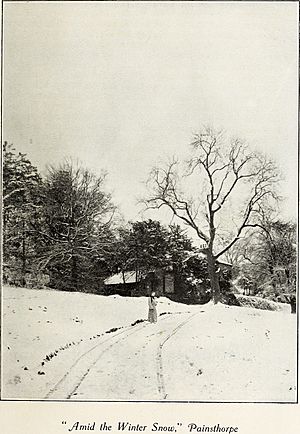Painsthorpe Abbey facts for kids
Painsthorpe Abbey was a special kind of religious home. It was a monastery for monks who followed the Anglican branch of the Benedictine Order. This abbey was only active for a short time. It opened in 1902 and closed in 1906. The abbey was located in Painsthorpe, a village in East Riding of Yorkshire, England.
Contents
What Was Painsthorpe Abbey?
Painsthorpe Abbey was a monastery. Monasteries are places where monks or nuns live. They dedicate their lives to religious practices. This particular monastery was founded in 1902. It was home to a group of Anglican Benedictine monks.
The Monks and Their Founder
The monastery was started by a man named Aelred Carlyle. He was a key figure in its creation. Carlyle was friends with Charles Chapman Grafton. Grafton was an important bishop from America. He was the Bishop of Fond du Lac. Bishop Grafton helped inspire Carlyle. Carlyle also inspired Alfred Hope Patten. Patten later founded a famous Anglican shrine.
Who Was Aelred Carlyle?
Aelred Carlyle was a very religious person. He wanted to bring back monastic life. He believed in the Benedictine way of life. This way of life involves prayer, work, and community. He led the group of monks at Painsthorpe.
The Benedictine Order
The Benedictine Order is a very old group of monks. They follow rules set by Saint Benedict. These rules guide their daily lives. They focus on prayer, study, and manual labor. The monks at Painsthorpe were part of the Anglican branch. This means they were part of the Church of England.
Moving to Caldey Abbey
The monks did not stay at Painsthorpe for long. In 1906, they decided to move. They left Yorkshire and went to Wales. Their new home was Caldey Abbey. This move marked the end of Painsthorpe Abbey.
The New Home in Wales
Caldey Abbey is on Caldey Island in Wales. It became the new home for the monks. The community grew and developed there. Caldey Abbey is still an active monastery today. It is a well-known place.
The Abbey Building
Painsthorpe Hall was the main building. It was used as the monastery. A special brick chapel was added to the hall. This chapel was important for the monks' worship. It served as their place of prayer. The hall and chapel were their home for four years.


